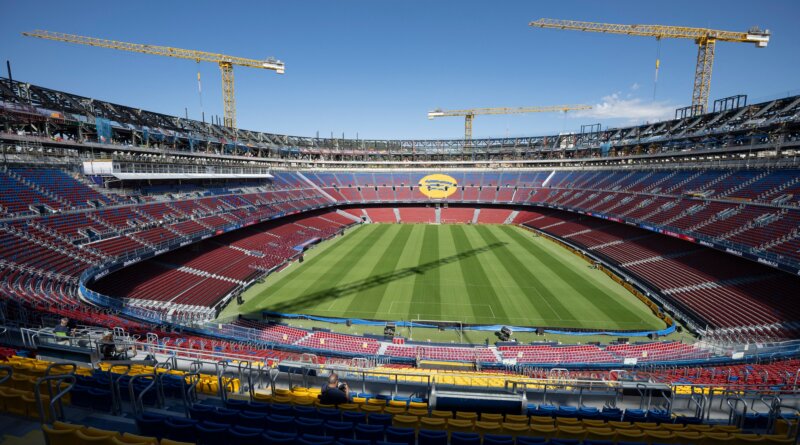Barcelona’s Montjuic Move: Stadium Costs Add to Financial Strain
Barcelona Faces Rising Costs at Montjuic Amid Camp Nou Delays
Barcelona’s Montjuic stadium situation has become a significant financial challenge for the club. The Catalan giants, forced to leave their iconic Camp Nou due to ongoing renovation delays, now must play home matches at the Estadi Olímpic Lluís Companys. While the move was intended as a temporary solution, the costs of hosting each match at Montjuic are proving substantial and add to Barcelona’s existing financial woes.
The Price of Playing at Estadi Olímpic: What Barcelona Pays Per Game
According to Elena Fort, Barcelona’s institutional vice-president, the club is currently navigating a complex and costly period. Each La Liga fixture at Montjuic incurs high operational expenses, from stadium rental fees to increased logistics and security costs. These outlays are notably higher compared to matchdays at Camp Nou, where the club had long-standing infrastructure and deeper commercial integration. The precise amount per match has not been disclosed publicly, but estimates from Spanish media suggest it runs into hundreds of thousands of euros per game.
Delayed Camp Nou Renovations: The Impact on Barcelona’s Finances
The timeline for Camp Nou’s reopening remains uncertain. Renovations—originally projected to be completed sooner—have experienced setbacks, forcing Barcelona to extend their stay at Montjuic. This prolongation means not only more rent but also a reduction in matchday revenue, as Montjuic’s capacity is significantly lower than Camp Nou’s. The club, which relies heavily on ticket sales and matchday income, is thus contending with diminished revenue streams even as costs rise.
Montjuic Stadium: A Less Lucrative Experience for Fans and the Club
The move to Montjuic has impacted the matchday experience for both fans and the club. The stadium’s location, accessibility challenges, and reduced amenities have led to lower attendance figures compared to traditional Camp Nou fixtures. Additionally, hospitality and VIP revenue have suffered, compounding the financial strain. The club is making efforts to maintain a strong home atmosphere and retain fan engagement, but the limitations of Montjuic are apparent.
Barcelona’s Montjuic Challenge: A Test of Financial Resilience
Barcelona’s Montjuic move is more than a logistical adjustment—it’s a test of the club’s financial strategy and resilience. With the Camp Nou redevelopment representing a long-term investment in the club’s future, the short-term impact of increased costs and reduced income is a hurdle Barcelona must overcome. The leadership, including vice-president Elena Fort, is focused on managing these expenses wisely while ensuring the club remains competitive on the pitch.
Looking Ahead: The Stakes for Barcelona’s Return to Camp Nou
The eventual return to a renovated Camp Nou is eagerly anticipated by fans and club officials alike. The new stadium promises enhanced facilities and increased revenue opportunities, crucial for stabilizing and growing Barcelona’s finances. Until then, the Montjuic arrangement serves as a reminder of the challenges facing Europe’s elite clubs during periods of transition.
Opinion: Financial Challenges Demand Smart Management
Barcelona’s experience at Montjuic illustrates the tough balancing act between investing in the future and handling present-day realities. The club’s ability to navigate these financial challenges will be a testament to its management and vision. While the added costs are unavoidable, strategic planning and clear communication with fans will be essential for Barcelona to emerge stronger from this period of change.
For more coverage on Barcelona’s stadium situation and the latest updates from the football world, visit for more news.
Your global gateway to nonstop football coverage:
News Goal
Share this content:

